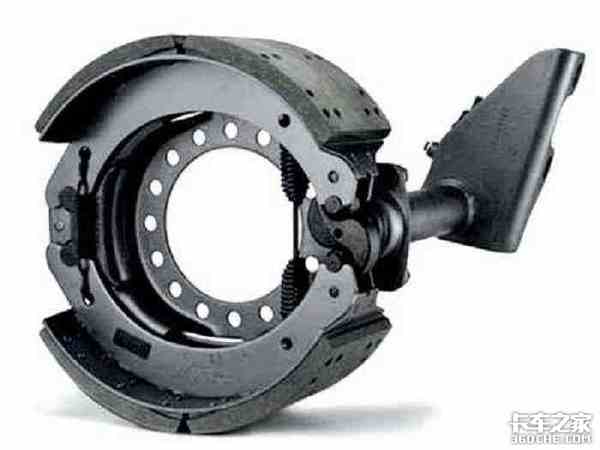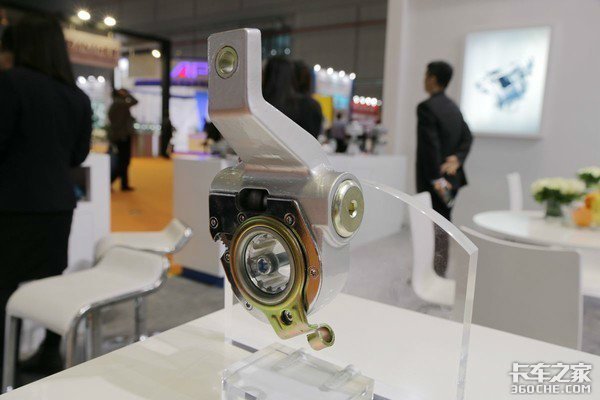15
2025
-
10
How should the self-adjusting arm of a truck be properly used and maintained?
Today, the editor will focus on the practical applications of self-adjusting arms, highlighting important considerations in their actual use, maintenance, and inspection, as well as simple methods to determine if a self-adjusting arm has failed.
Before getting into the main content, I want to first emphasize my own viewpoint: the braking system is an integrated system, where components such as the brake caliper, self-adjusting arm, camshaft, brake, and brake drum are interdependent and influence each other. When analyzing and addressing various issues with the self-adjusting arm, one cannot take a piecemeal approach.

▎Analysis of the Causes of Non-Compliant Brake Clearance
We categorize the various causes of non-compliant brake clearance into four main parts: self-adjusting lever, brake drum, brake system, and vehicle/axle:
Regarding the self-adjusting lever: improper clearance matching, inaccurate preset clearance values; poor product consistency of the self-adjusting lever, unstable adjustment precision; the self-adjusting lever is not correctly installed on the vehicle;
Regarding the brake drum: improper machining accuracy of the brake drum, internal control out of round, excessive runout; inappropriate material and structure of the brake drum, abnormal thermal expansion coefficient, overall poor rigidity, prone to deformation; improper installation of the brake drum, whether internal or external. Both types rotate synchronously coaxially with the hub. If installed improperly, the brake drum will be abnormally unbalanced.
Brakes: Poor stiffness of the brake assembly, including the camshaft and brake shoes; abnormal thermal expansion rate of friction pads, resulting in unusual expansion when heated; improper fitting of the camshaft and brake shoes with the brake backing plate, leading to an out-of-round friction surface on the brake pads.Vehicle/Axle: Abnormal coaxiality of the axle housing, poor overall rigidity; excessive play in the wheel end bearings, causing the hub to not rotate properly around the axle centerline.
▎Routine Maintenance Requirements for Self-Adjusting Arms
1. During every 20,000 km of vehicle operation, grease the lubrication nipple of the self-adjusting arm with grease No. 2 lithium-based lubricant.
2. If brake softness is felt during regular use, it is recommended to check the counterclockwise torque of the worm head on the self-adjusting arm. Rotate one full turn; if the minimum measured torque is less than 18 Nm, it indicates that the self-adjusting arm is damaged and must be replaced promptly.
3. Check whether the control arm is securely fixed. Excessive wear of the control arm bushing or loosening of the control arm locking bolts can cause the self-adjusting function to fail.
▎Common Misuse of Self-Adjusting ArmsFirst, during routine maintenance, when a vehicle experiences problems such as excessively small brake clearance or overheating, it is common to use a wrench to turn the worm gear 'hexagon' counterclockwise to increase the brake clearance.Misuse Guidance: Regulations for self-adjusting arms state that manually turning the worm gear hex head is only permitted during installation, removal, or inspection; otherwise, it will directly cause premature wear of the internal mechanism of the self-adjusting arm, leading to brake weakness during subsequent vehicle use.Correction Method: During routine maintenance, avoid turning the worm gear 'hexagon' as much as possible to extend the service life of the self-adjusting arm. If a problem with excessively small brake clearance occurs, promptly check whether the self-adjusting arm model is correct, whether its installation is proper, and whether there are issues with the brake components.
Secondly, the vehicle exhibits slow brake reset and dragging brake phenomena, which are judged to be caused by internal sticking of the self-adjusting arm, requiring replacement of the self-adjusting arm. Misconception guidance: In the vehicle's braking system, the self-adjusting arm only serves to convey the thrust from the air chamber and to ensure the proper brake clearance between the brake shoes and the brake drum. The self-adjusting arm is mounted on the camshaft and does not have any force to reset the brakes on its own. Brake reset relies on the return springs of the brake shoes and the return springs of the air chamber.The correction method is: When the above problems occur in the vehicle, the installation of the self-adjusting arm should be checked in a timely manner (especially the axial clearance), as well as whether there are issues with the brake cylinder return springs, the brake return springs, and the fit between the S camshaft and the roller.
▎Simple Method to Determine Failure of the Self-Adjusting Arm FunctionExcluding improper installation of the self-adjusting arm, use a SW12 wrench to turn the hexagonal head of the worm gear counterclockwise by more than 180° to enlarge the gap between the brake drum and the brake shoes (do not use pneumatic or air-powered tools).With the vehicle's brake air pressure maintained at ≥0.6MPa, apply the brakes several times. If the hexagonal head of the worm gear is observed to rotate clockwise, it can be determined that the self-adjusting arm is functioning properly and can be used normally.
▎Analysis of Common Fault Causes in Self-Adjusting BrakesHere, we will focus only on analyzing two typical fault modes: brake overheating and brake fade. To make it easier for everyone to read, I have drawn two flowcharts to help with understanding.
制动发热故障原因分析流程图
制动疲软故障原因分析流程图
The above are some tips and insights I have summarized regarding the daily use, maintenance, inspection, and failure analysis of the self-adjusting arm. My explanation may still not be very comprehensive, so I hope fellow truck enthusiasts can provide valuable feedback. Thank you.




